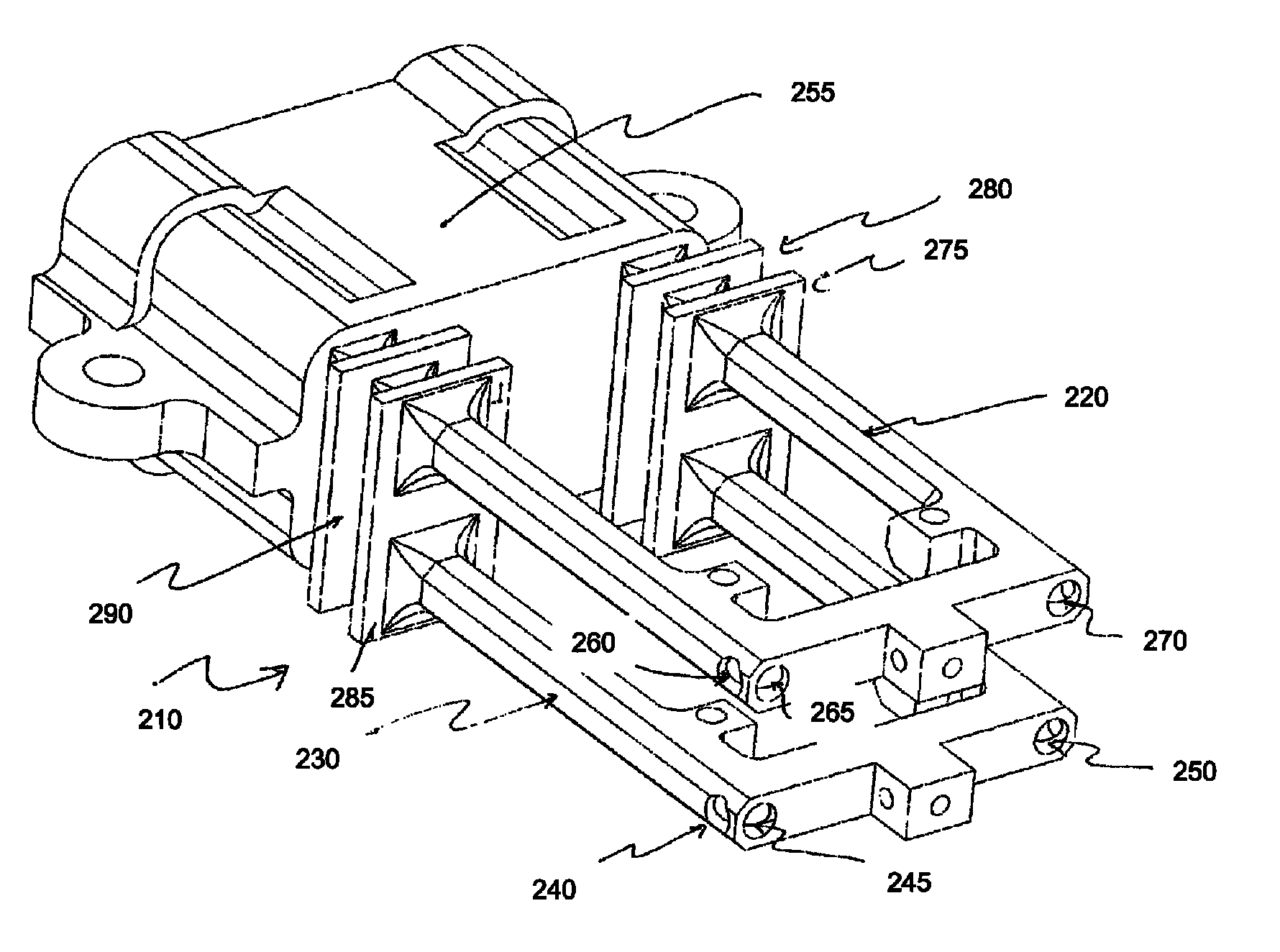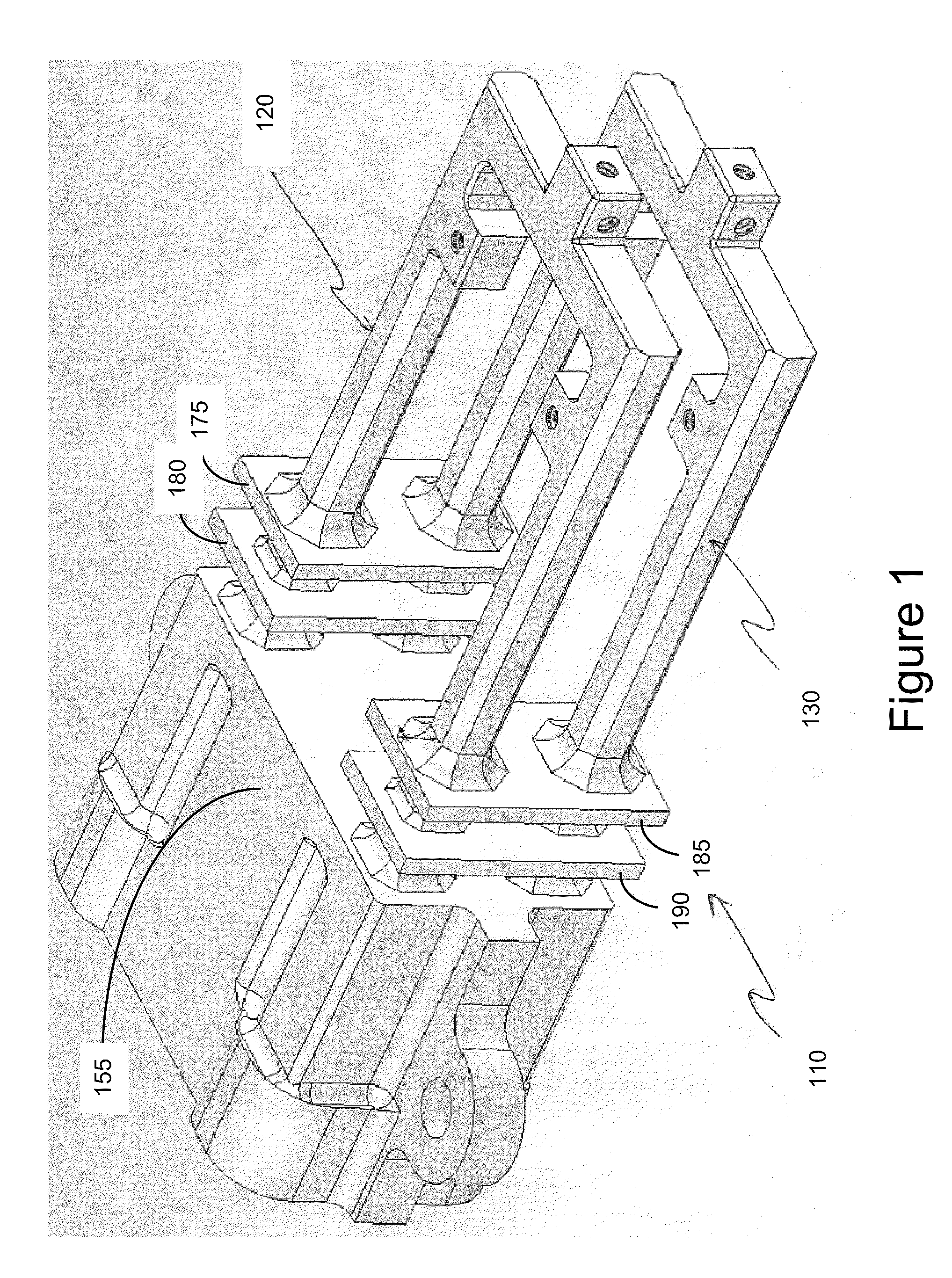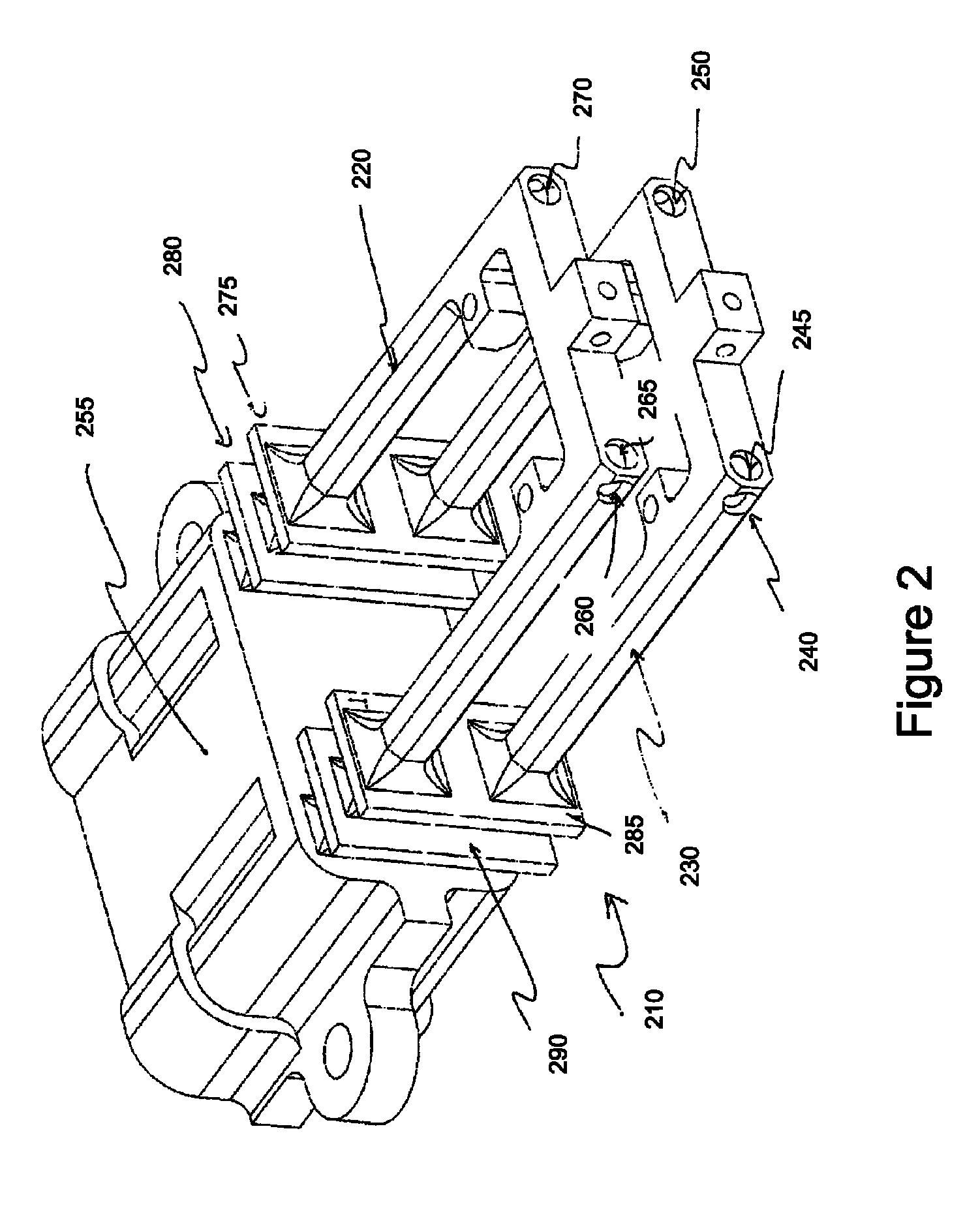Methods of manufacturing and temperature calibrating a coriolis mass flow rate sensor
a technology of mass flow rate and temperature calibration, which is applied in the direction of liquid/fluent solid measurement, specific gravity measurement, machines/engines, etc., can solve the problems of normal operation conditions, cracking or otherwise degrading of the adhesive joint, and the integrity of the coupling of the tube to the metal base is not necessarily unyielding and unchanging
- Summary
- Abstract
- Description
- Claims
- Application Information
AI Technical Summary
Benefits of technology
Problems solved by technology
Method used
Image
Examples
Embodiment Construction
[0026]The Figures (FIGS.) and the following description describe certain embodiments by way of illustration only. One skilled in the art will readily recognize from the following description that alternative embodiments of the structures and methods illustrated herein may be employed without departing from the principles described herein. Reference will now be made in detail to several embodiments, examples of which are illustrated in the accompanying figures. It is noted that wherever practicable similar or like reference numbers may be used in the figures and may indicate similar or like functionality.
[0027]FIG. 1 illustrates a solid piece 110 of polymeric material, CNC-machined from a single block of elastic polymeric material, according to one embodiment. The flow-sensitive element of subassembly 110 is comprised of two square “U”-shaped assemblies 120 and 130. However, subassembly 110 is devoid of flow passageways to allow fluid to flow through the structure. Sub-assembly 110 c...
PUM
| Property | Measurement | Unit |
|---|---|---|
| melting point | aaaaa | aaaaa |
| pressures | aaaaa | aaaaa |
| temperatures | aaaaa | aaaaa |
Abstract
Description
Claims
Application Information
 Login to View More
Login to View More - R&D
- Intellectual Property
- Life Sciences
- Materials
- Tech Scout
- Unparalleled Data Quality
- Higher Quality Content
- 60% Fewer Hallucinations
Browse by: Latest US Patents, China's latest patents, Technical Efficacy Thesaurus, Application Domain, Technology Topic, Popular Technical Reports.
© 2025 PatSnap. All rights reserved.Legal|Privacy policy|Modern Slavery Act Transparency Statement|Sitemap|About US| Contact US: help@patsnap.com



